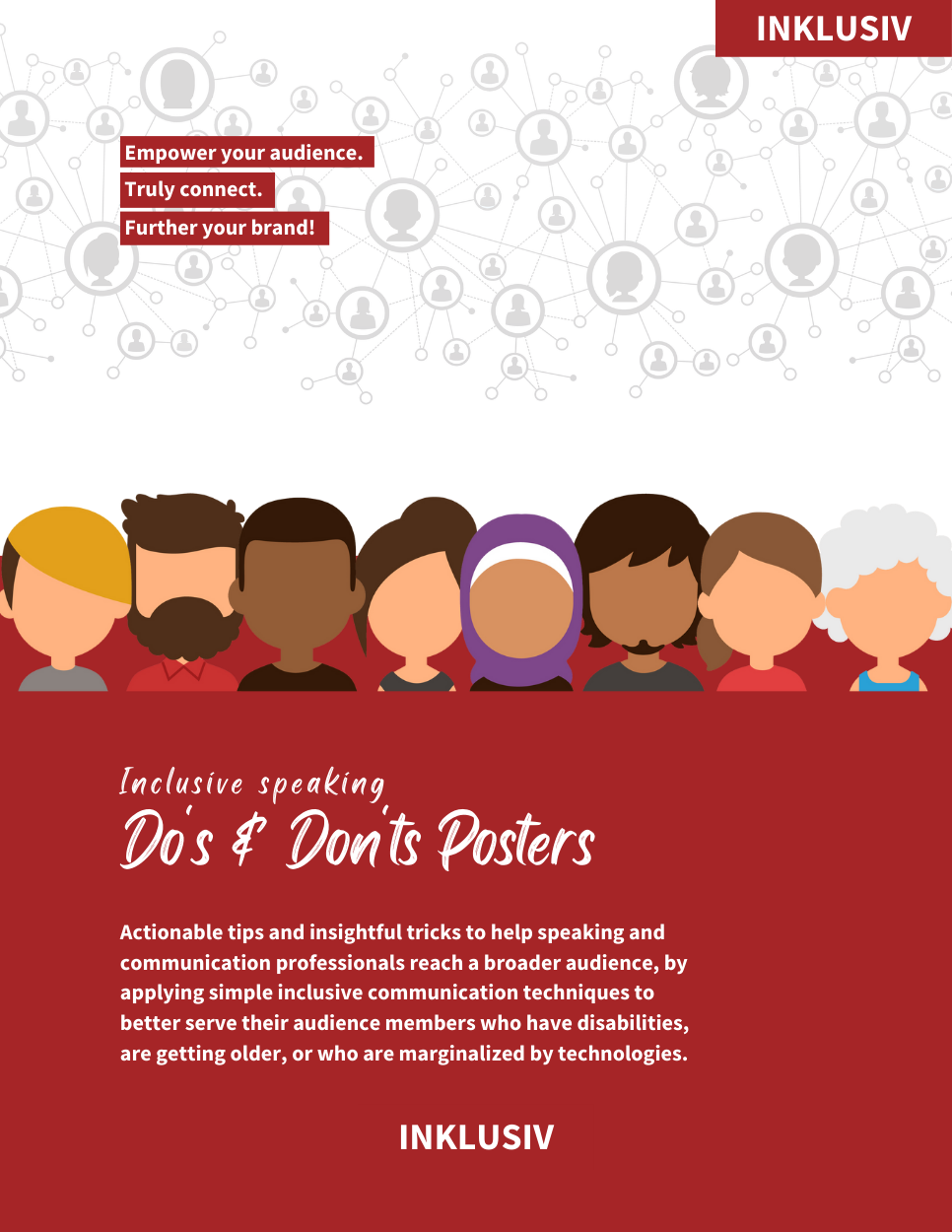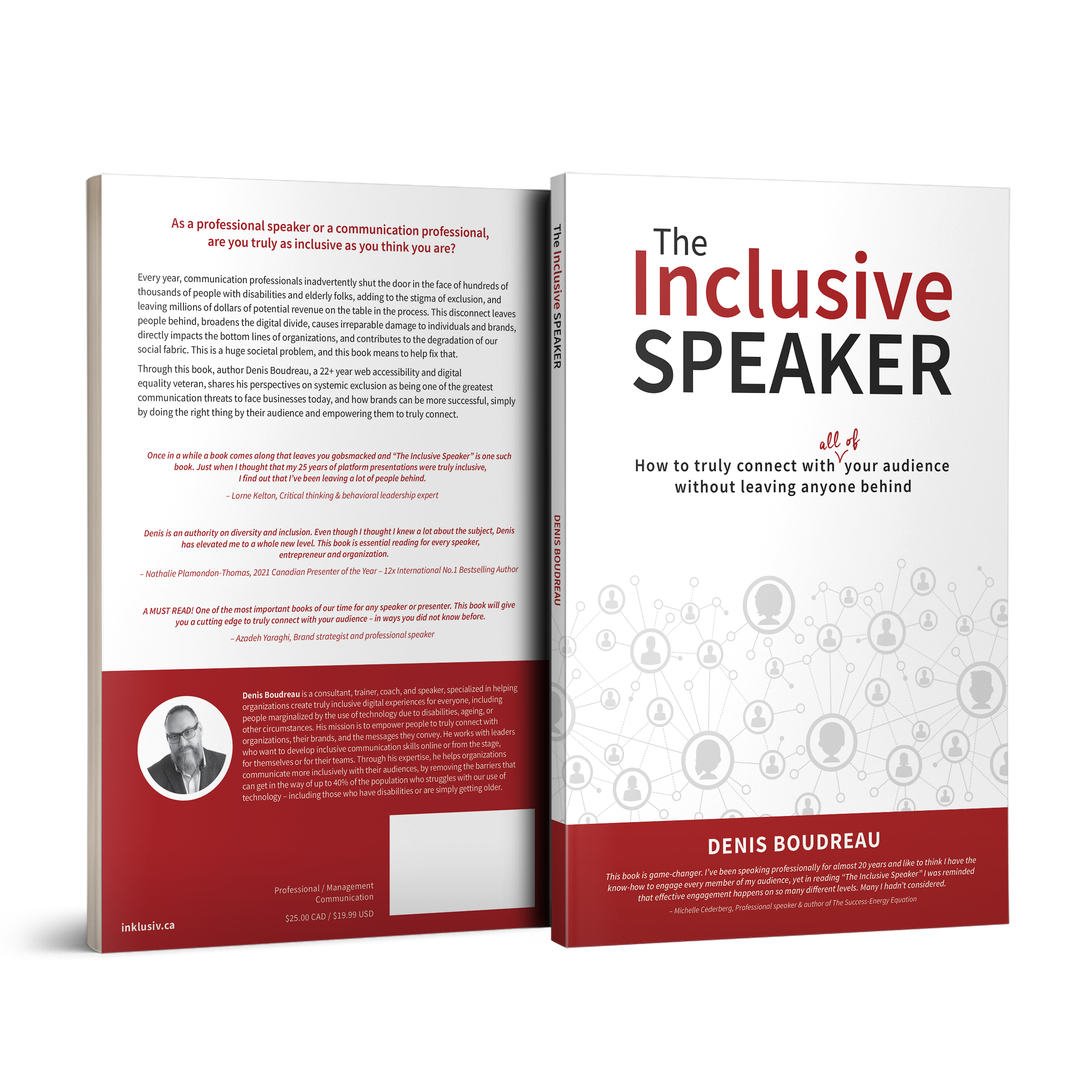The audience members we leave behind
My book, “The Inclusive Speaker“, features eight personas that represent different audience members with disabilities, each providing a list of do’s and don’ts for inclusive speaking based on their unique challenges and perspectives. By considering these guidelines, speaking professionals can ensure that they are providing the necessary accommodations, whether physical or sensory, to make their events welcoming and accessible to all attendees.
Not only does this create a more inclusive experience for the audience, but it can also help speaking professionals attract more attendees and broaden the reach of their message. In today’s world, where inclusivity is increasingly valued, speaking professionals who prioritize accessibility and diversity can differentiate themselves from the competition and may be more attractive to potential clients.
By taking steps to create inclusive events, inclusive speakers can not only promote accessibility and diversity, but they can also potentially increase their impact… and their income! In short, these personas are a valuable resource for anyone looking to create more inclusive speaking experiences.
Meet the INKLUSIVCOMM personas
“Why aren’t speakers relying on powerful visuals more to support the message on their slides, instead of boring bullet points and big walls of text?”
“How hard can it be for speakers to provide sufficient colour contrast for text and graphics, and why do they keep sharing information based on colour alone?”
“Verbally describing visuals and key data points would go such a long way towards helping me understand what the speakers refer to, or talk about in their talks!”
“Videos and animations are great, don’t get me wrong. But too many speakers use flashing effects and distracting animations that just make my head spin!”
“Dear speakers, please caption the videos you share! It’s really not that complicated. And while you’re at it, can you also plan for live transcripts?”
“Unclear instructions, unnecessary distractions, and long lectures are surefire ways for a speaker to completely lose my attention in a matter of minutes.”
“Speakers tend to overcomplicate things with figures of speech and complex metaphors that often send me in panic mode. Plain English works so much better!”

Subscribe for your free copy of our Inclusive Speaking Do’s & Don’ts Posters
Did you know?
In 2021, the Pew Research Center reported that 46% of young American adults (aged 18 to 29) already knew of at least one person who was transgender or went by gender-neutral pronouns. This percentage was up from 32% in 2018. As your brand is trying to connect with the next generation of young professional, are you adapting your language and mindset to recognize and acknowledge non-binary identities?
